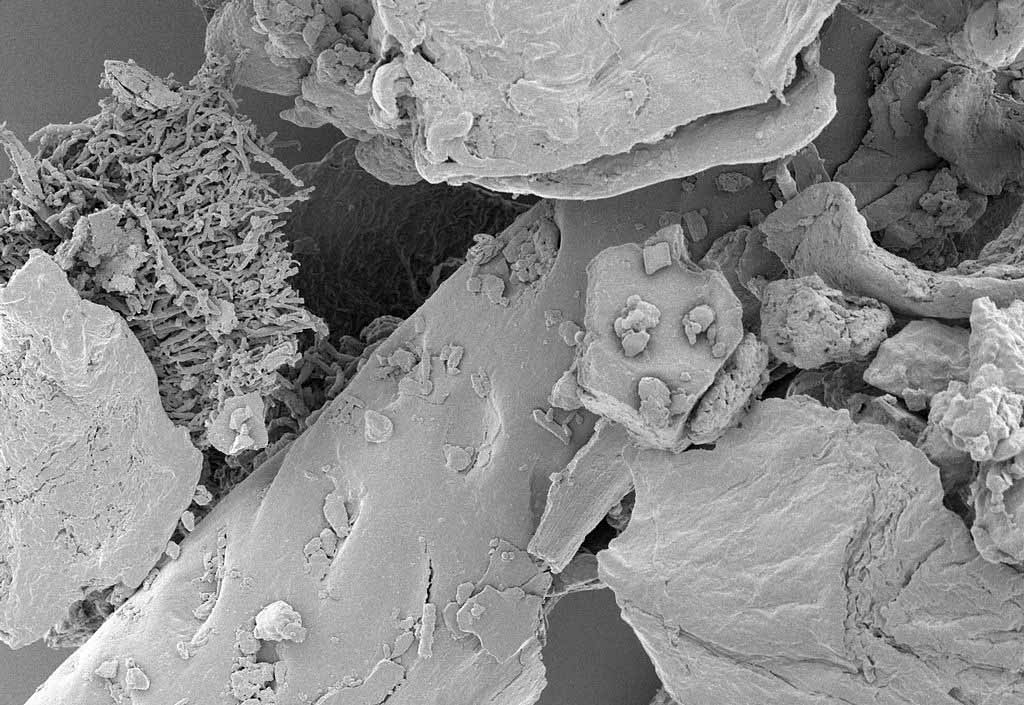Where does dust come from? Yes, you cleaned yesterday but already a fine layer of fluff and dust has settled on your shiny surfaces. On closer inspection, the mystery deepens—what is that even? Is it fluff? Is it dirt? How did it get there so fast and is it bad for your health?
To better understand this substance that you’ve taken for granted all your life, you need to take a closer look at what dust is. You can think of it as a cocktail of tiny, even microscopic, pieces of your environment. So, if there are humans in the house (obviously), there will be dead skin cells. If there are cats and dogs, there will be hairs. But it isn’t quite that simple. There’s much more to dust than meets the eye.
A deep dive into dust
Besides those oh-so-gross dead skin cells and pet hair, carpets and upholstered furniture contribute their fair share of fibers to household dust. Those open windows and doors and the movement of people are mostly to blame, with 60% of household dust coming from outside. Particles are blown in from outside and soil is tracked in on pets and people. Taken all together, dust is complex and consists of tiny pieces of dead and decaying organic matter (like hair, skin cells, dust mites, pollen, and dead pieces of bugs) and inorganic substances (like fibers from clothes, bedding and furniture, and bits of plastic). Dust is composed of bigger particles that settle to the ground and smaller ones that remain in the air for long times.
Dust’s surprisingly dangerous cargo
If you’ve ever experienced the beauty of a sunbeam lighting up particles of dust suspended in the air, you will know that you are walking around in a dust cloud all day long. Dust particles that have settled are constantly being resuspended when they are disturbed and new particles are being released into the air all the time. That does not sound so terrible until you realize this terrible fact: as dust hangs around it accumulates all kinds of toxins. Not only are you constantly breathing this dust, but these toxins are particularly harmful to children who play on the floor and inexplicably feel the constant urge to lick and chew everything in sight.

Read more: Walking Corpse Syndrome: Walking Dead Comes to Life
In recent years, an array of menacing chemicals has been detected while taking a piggyback ride on dust particles. Pollutants, metals, and chemicals that are soaked into the dust can be tough to get rid of, despite rigorous cleaning. It seems that some of them can persist for years on end—the pesticide DDT has been banned for decades, yet it has been found in floor dust of houses quite recently.
Toxic chemicals come from consumer products such as vinyl flooring, electronics, furniture, carpets, paints, personal hygiene products, and ironically, cleaning products. They may simply float into the air and attach to dust particles or enter dust when they are physically knocked off a product. Plasticizers and flame retardants seem to be the biggest cause of concern right now and are commonly responsible for hormone disruption, as well as reproductive system and developmental system toxicity.
Declaring war on dust
Whether it is the fluffy dust bunnies that live under your bed or the thin layer of denser dust on the piano that the children are writing in, it is wise to get rid of dust as often as possible. Carpets tend to greedily latch onto copious amounts of dust, so regular vacuuming and carpet washing is helpful. Dust surfaces with a damp cloth so that the dust accumulates on the cloth and can be washed out instead of simply swishing over it with a dry feather duster. Who knows, maybe it is dusting the apple off every day that really keeps the doctor away.


